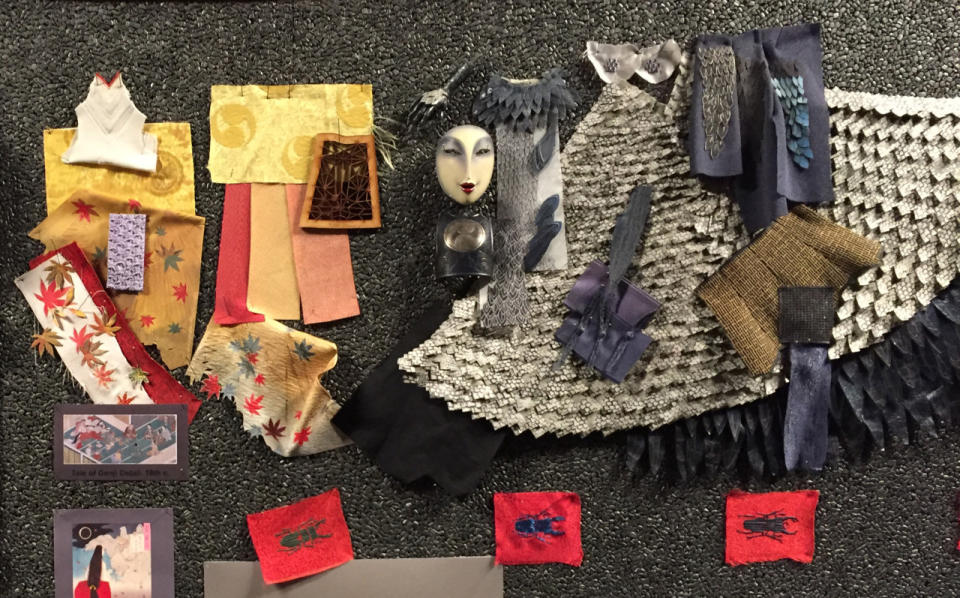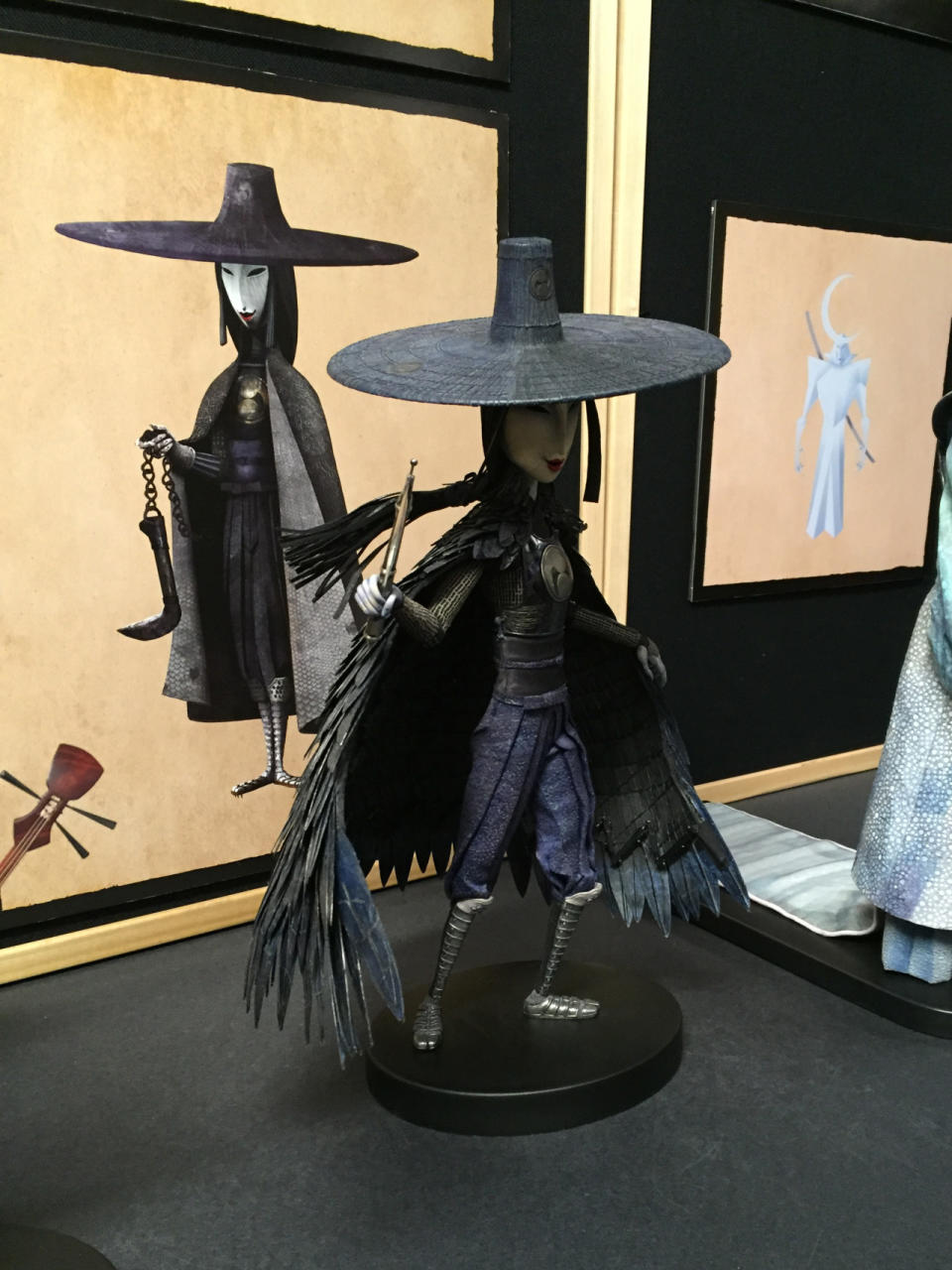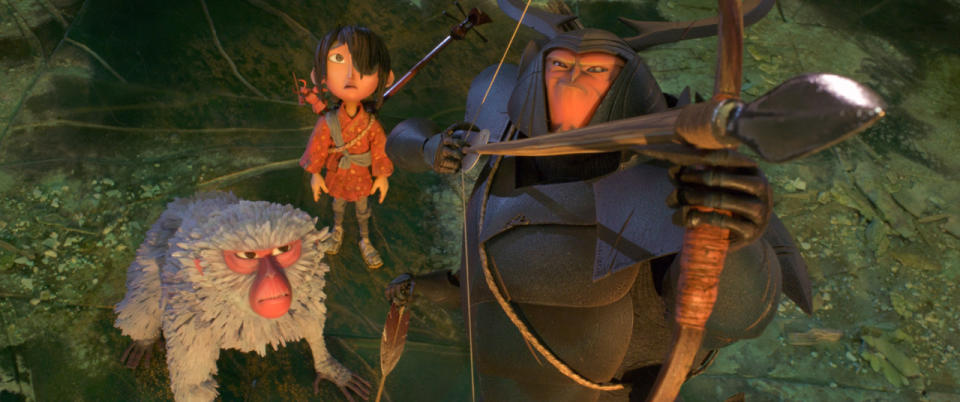Fashion Career You Didn't Know Existed: Meet Stop-Motion Costume Designer Deborah Cook
So we’ve all heard of career costume designers. The names Adrian, Edith Head, Colleen Atwood, and Milena Canonero may come to mind — they’re all legendary, renowned costume designers for live action films. But with technology evolving and with newer types of mediums and methods emerging to create films, more and more jobs that didn’t exist before are being created. For example, did you know there are costume designers designated for animated films, including CGI and stop motion? Neither did we!
We got to speak with stop-motion costume designer Deborah Cook, from LAIKA, the mastermind behind the costumes of some of our favorite animated movies like Coraline, Paranorman, and The Boxtrolls. Although she may work on smaller figures, don’t underestimate her work: It’s just as grueling, inspiring, and grand as the work done in live-action movies, with a creative process no different.
Here we get insight on her niche occupation, find out the beginnings of her career journey, learn the differences between live action and stop motion design, and hear about her struggles and satisfactions.

Costume designer Deborah Cook. (Photo: Steven Wong/LAIKA, Inc./Focus Features)
Yahoo Style: So how did you come to being a costume designer for stop motion?
Deborah Cook: I went to Central Saint Martins College and did sculpture. Within the fashion college, painting and sculpture were all in the same area. So we got to use fabrics and work with people of different disciplines. Just looking around and seeing what everyone was doing, I started working with fabrics myself, to which I did more installation pieces and not traditional sculpture. I also learned how to do upholstery here as well. I’ve known how to sew since I was a child and had my first sewing machine at 12 years old. I made clothes for everyone around me whether they liked it or not. All my toys had full wardrobes! I also have been apple to pattern cut, so I could make things for really random shapes, and some of our characters don’t have traditional body shapes, so you have to be fairly flexible. Over the course of time and my experience in working for TV, theater, and films, you learn the different requirement needs for different fabrics.
What prepared you for this position? School? Internships? Previous occupations?
Making costumes for live-action jobs and just messing around with friends and making our own films. I made costumes from random things — absolutely anything. When you’re working with friends, you don’t feel observed or judged in any way, so you can be a bit more explorative with the materials you use. My love for history and textiles have been a great help as well.
Growing up, did you envision yourself becoming a costume designer? Let alone for stop motion?
I didn’t know I would end up in stop frame, but I wanted to be really happy in what I was doing. I didn’t want to just have a job that used parts of what I liked doing. Sometimes I would get frustrated and look at all the things I really loved doing and thought, What can I do that uses all this together? Then I finally found something that lets me do it all. I initially set out to do sculpture, and that trajectory took me through different areas and just eventually led me here. While in college, people asked me to create things and as I left college as I worked in T.V., theater, and film. People wanted very specific unusual props that required imagination, different materials, on a small budget, so they would come to me because they knew I would come up with something.

A small portion of Deborah’s mood boards for developing costumes for her characters.
For Kubo and the Two Strings, what were your inspirations for the characters?
Vintage kimono fabrics from Tokyo influenced the color script for the movie’s costumes as well as informing how we approached maintaining the character of those fabrics within the creative concept of the movie. We also looked at a lot of historical characters, such as for Kubo’s mum, we looked at the Tale of Genji, which is written by a Heian woman. She talks about the day-to-day existence, such as what they wore and how they dressed.
How far in advance did you start your research?
I usually start researching a year in advance. Researching all aspects of the character’s costume is the key to the emergence of the character and also informs the artistry of the film. I research technical advances that I might incorporate and techniques both ubiquitous, historic, and contemporary and look for a uniqueness in the creative approach to experiment with and apply to my designs. I build my designs in a paper collage, as I can visualize the costume three-dimensionally during that construction process. I research fabric types and their properties and new ways of interpreting textiles into something more apt for a small-scale genre. I thrive on new areas of research. I like to immerse myself in the costumes and crafts of ancient cultures, contemporary and classic art, and also look to the world of innovative textiles and fashion design.
What are your favorite mediums or sources to gather inspiration?
I like to go to a lot of art exhibitions and look through art books. I look at how people are using materials and technology. I also look at new fashion designers and see how they use new materials and new pattern cutting techniques. Going to higher-end fashion boutiques is great because they invest a lot more in new surface work, such as new heat treatments. For Kubo, Issey Miyake was a big designer inspiration because of his folding, draping, flow, and pleating techniques.

Characters and actual dolls used for the film. All built with armatures underneath and adorned with costumes developed by Deborah and her team.
When it comes to sourcing fabrics for the costumes, what are some key points you must keep in mind?
Animation costumes require both an integral gravity and the ability to propel their own movement, as they don’t have a body beneath them to do that for them. They have a steel-jointed armature moved frame by frame. With that in mind, I look for fabrics that form a basis for the costumes, such as very tiny surface texture, stretchy, lightweight, and will dye easily. I love to hunt for unusual fabrics for inspiration! Wherever I travel, I always go to the fabric stores and textile art galleries. These inspirational pieces help propel research and development with a team of costume fabricators. During this time we formulate new processes and techniques and innovate a unique language for costumes for each movie.

Sister, Kubo’s aunt and one of the chicest villains in Kubo and the Two Strings, in her handmade costume, developed by Deborah and her team.
Since the clothes are made on such a smaller scale, how important are the details and level of construction?
It’s huge! We have to make many duplicates and they have to be exact to one another, so you really have to go into the minutest details. When we’re shooting, the cameras pick up the fluff and [granularity] from the lighting, so the tiniest objects and details are captured by the camera. When you blow it all up on the theater screen, if you’re not detailed enough it might all merge into a big nothing. So we have to make sure there is enough detail in there so it translates on the screen.
Since it’s stop motion, and the characters move, on average how many pieces of clothing do you have to create for one character?
There can be as many as 25 to 30 duplicates of the lead characters. Each costume has to be an exact duplicate, so the process in which they’re fabricated is heavily documented, step by step, down to millimeters. There are also spares and larger scale elements built for extreme close-ups.

From IRL to film, here you can capture the details of the costumes and outfits created by Deborah and how they translate onto the screen. (Photo: Laika Studios/Focus Features)
What are the biggest challenges doing costume design for stop motion?
Small scale costumes for stop-frame animation aren’t in any way the same as miniature costumes. There are specific considerations to plan for, like how we engineer gravity and naturalistic movement into costumes between 9 to15 inches tall and give them all the glory of a full-scale costume in their textiles and draping and artistic integrity. Each costume will be seen enlarged hugely on theater screens, and I want all of the details and artistry in them to be as convincing and beautiful as possible.

Kubo on one of the actual sets for the film.
What’s the most enjoyable aspect of this career to you? Like, what do you find the most satisfying?
Doing the designs, I love it. I love the collaboration and the group of people I work with. I’m never not going to design, no matter where I am the world.
Have you worked with costume design for live-action movies before?
If so, what are the differences? It’s kind of like designing mini costumes?
For live-action costumes, they’re much bigger costumes and don’t have the same level of details we have to put into the stop-motion costumes. The actors always have something to say. Dolls don’t really talk back, which is a bonus. Stop motion is more precise, which is what drew me to it. Bigger costumes are great, and I loved it, and I can do that. It’s just the preciseness has a more in-depth experience. It’s also not just straightforward clothing making. It involves a lot of engineering, different structures and materials, armature — and that all fascinated me.
What’s the best advice you received throughout your career?
Not so much advice, but it’s just about having people around you who are appreciative of what you’re doing is really encouraging.
Advice for aspiring costume designers?
Staying focused and determined is key. And finding creative collaborators is essential. Also, think about the scale and stay focused.
Kubo and the Two Strings is in theaters on August 19, 2016.
Follow us on Facebook, Instagram, and Pinterest for nonstop inspiration delivered fresh to your feed, every day.

